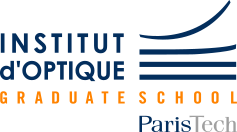A wide introduction to quantum IR imaging
by Olivier Gravrand, Researcher at CEA LETI IR Group, Grenoble, France
IR imaging relies on the detection of small energy photons which implies different issues compared to visible light imaging. Two main detector families are available nowadays. First, this photon energy may be converted in heat and detected by a bolometer, or this photon can be absorbed in an adapted narrow gap semiconductor and give birth to an electron-hole pair. This second category, usually called “quantum IR detector” and allows very high performance and higher complexity IR imagery.
This tutorial aims at introducing the quantum IR imaging issues both from a performance and technological point of view. Starting from basic physical phenomenon exploited in quantum detectors the first part will be devoted to a large overview of detection structures usually used for quantum detection (from PC to PV). The few competing material systems in the IR field will be reviewed, from 3-5 bulk materials (InGaAs, InAsSb, InSb) to 2-6 (HgCdTe) with perspectives to newcomers “synthetic” narrow gap materials such as QWIPs and superlattices.
The second part will be devoted to a special focus on the photodiode, which remains the main photo-detection structure today. Its intimate functioning will be exposed. Dark current and photocurrent mechanisms will be reviewed and linked to photodiode performances, with an emphasis to a major figure of merit for the photodiode: the minority carrier lifetime. The specific case of avalanche photodiodes will be exposed. A particular attention will be drawn to performance evolution with operating temperature in perspective of the SWAP (size weight and power) trends.
The last part will review the past evolution of IR detection structures (1st and 2nd generation) and will open to the expected future generation of IR focal plane arrays. Will it be dual-band focal plane arrays? Or simply very large retinas with ultra fine pixel pitches operating at very high temperature? What role avalanche photodiodes may play in this context in the near future? What kind of additional optical functions might be added onto the detector chip itself?
Intended Audience
This lecture is intended for student, scientists and researchers interested in high performance IR imagery. The idea is to give a better understanding of the functioning of IR FPAs in order to help the user to optimize the use and/or the optical design around the IR retina.
Biography
After a PhD in physics applied to earth science (high performance magnetometer design) at the IPGP (Institut de physique du globe de Paris), Olivier Gravrand joined the LETI IR group in 2001, in charge of IR detector electro-optical characterization. Since then he has been working on HgCdTe, InSb, InGaAs and 3-5 super-lattice photodiodes, both from the characterization, design and simulation point of view, in close collaboration with the Sofradir Group.
